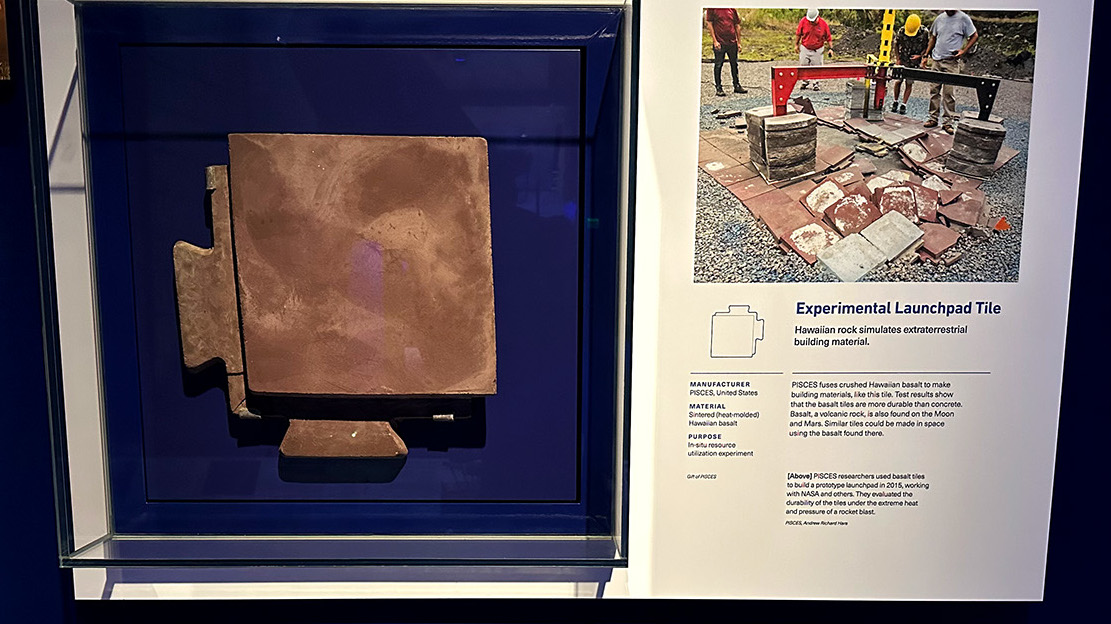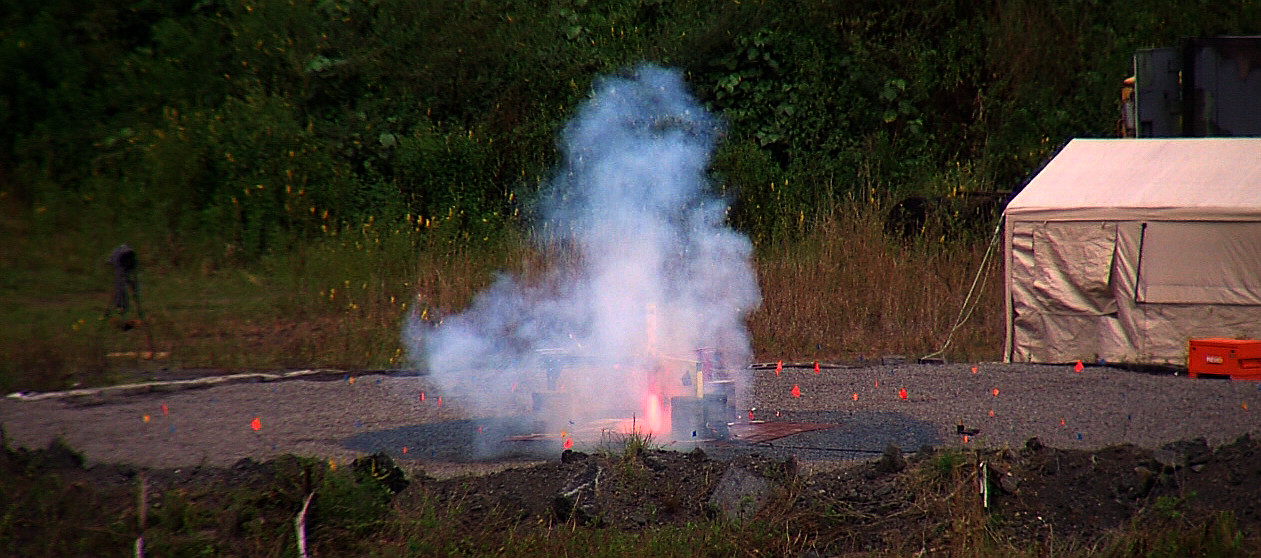(BIVN) – Launchpad tiles developed by a Hilo-based research program are being showcased in a new exhibit at the Smithsonian’s National Air and Space Museum in Washington, D.C.
The launchpad tiles, featured in the Futures in Space exhibition, are the product of the University of Hawaiʻi at Hilo Pacific International Space Center for Exploration Systems (PISCES) program.
In March 2016, Big Island Video News recorded video of a rocket fire test of the launchpad tiles at the Puna Rock Quarry in Keaʻau.
PISCES Conducts Lunar Pad Rocket Fire Test (March 20, 2016)
From the UH Hilo news release:
An innovative collection of planetary construction materials that were researched and developed in Hawai`i for sustainable space exploration are being showcased in a new exhibit at the Smithsonian’s National Air and Space Museum in Washington, D.C. in collaboration with the University of Hawai`i at Hilo Pacific International Space Center for Exploration Systems (PISCES) program.
“The Futures in Space exhibition features two launchpad pavers and an interlocking brick made of sintered Hawaiian basalt and developed by PISCES,” noted Chris Yoakum, communication officer of the UH Hilo aerospace research program. The exhibit opened on July 28, 2025 and presents multiple visions of the future of space exploration while introducing the people, companies, governments, and technologies that are helping to shape it
“We’re honored to have our work featured among the many outstanding contributions to space at the Smithsonian’s National Air and Space Museum, one of the world’s most visited museums dedicated to flight and space exploration,” said Christian Andersen, research director at PISCES. “This kind of recognition highlights the value of our continuing work here in Hawai`i to help make sustainable living on Earth, and beyond, possible. I’m excited to see local research from the Big Island contributing to global conversations about the future of space.”
The samples were manufactured as part of a series of PISCES-led projects to create and deploy In-Situ Resource Utilization (ISRU) technology, a term coined by NASA to describe the process of transforming raw, locally sourced planetary material into usable resources.
“Hawaiian basalt is chemically similar to lunar and Martian regolith, making it an ideal material for developing ISRU processes,” Andersen explained. “PISCES’ basalt components are created through a process called sintering—using heat to fuse particles together without melting them—resulting in strong, durable construction elements suitable for habitats, landing pads, and other essential infrastructure in space.”
“We wanted to show our visitors the type of work that’s being done now, here on Earth, to prepare for future crewed missions to the Moon and Mars,” said Matthew Shindell, space curator at the National Air and Space Museum. “And we wanted to show who is doing this work. These experiments that PISCES has done with Hawaiian basalt are wonderful examples of innovations in ISRU technologies.”
In addition to the basalt components, the Futures in Space exhibit also features PISCES outreach programs that encourage and support youth in pursuing STEM-related studies and careers. The program’s research projects continually provide opportunities for students to gain work experience while advancing emerging fields in materials science and ISRU.
“Hawai`i has a unique role to play in the future of space,” Andersen said. “With our lunar-like landscapes, scientific talent, and cultural legacy of exploration, Hawai`i can make meaningful contributions to the technologies and ideas that will help shape how humans live and work beyond Earth. We’re excited to be a part of that.”



by Big Island Video News4:01 pm
on at
STORY SUMMARY
HILO, Hawaiʻi - The interlocking pavers made of sintered Hawaiian basalt are being showcased at the Smithsonian’s National Air and Space Museum in Washington, D.C.